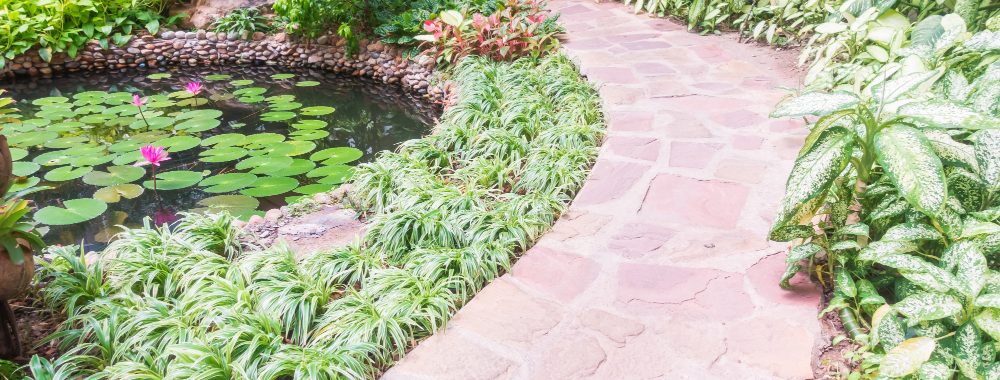While living in Glasgow, possessing an attractive garden can add tremendous value to any property. But soft landscaping in Glasgow south is not just a smart investment to increase property market value before you sell your home fast in Glasgow, but it can also provide an inviting place for its inhabitants or potential tenants to gather and relax.
But what exactly is soft landscaping?
Soft landscaping can include trees, plants, grasses, and flowerbeds arranged artistically as an eco-friendly means of mitigating runoff and rainwater pollution.
Glasgow Garden Aesthetics
Soft landscaping is an effective way to increase your property’s curb appeal and add quite a significant worth to it. Softscape designs use features like flowerbeds and plants from nature to create vibrant environments that add aesthetic value while still remaining compatible with neighbouring properties. A well-planned softscape design complements your home beautifully while fitting in seamlessly with neighbouring properties and creating an eye-catching backdrop that provides shade from the sun.
While hardscaping elements may enhance your outdoor space, soft landscaping is the true soul of a garden. Soft landscaping in Glasgow south employs living horticultural elements like grass, flowers, and trees to add texture and colour to your yard while being more versatile than their hard counterparts; softscapes can easily be moved or changed when required.
Soft landscapes come in various forms and sizes but are most easily identified by their height and colour. A tall hedge may serve to block out unsightly neighbours or act as a natural privacy fence, while wide green areas provide outdoor play areas for children and pets as well as aid with water flow.
Soft landscaping requires careful planning as some plant variables may not be immediately evident. For instance, shade trees take time to mature, while hedges take years. Therefore, soft landscapers must consider three main plant variables when planning soft landscape designs: form, growth rate, and textural variation.
Ecological mitigation
Soft landscaping refers to the renewal or upkeep of an outdoor space’s plant life. This may involve planting, grading, weeding, and trimming plants such as plants, trees, shrubs, and flowers, as well as the creation and maintenance of garden beds, borders, or potted plants. Soft landscaping elements are much simpler and quicker to change than hardscape elements; simply changing annual or perennial flowers can give an entirely different appearance every season.
Soft landscaping provides significant ecological mitigation benefits. Trees and plants can help mitigate erosion, soil compaction, and wind erosion; additionally, they attract birds, insects, bees, and other wildlife by providing shelter.
Soft landscaping not only adds aesthetic value, but it can also improve air quality in gardens or outdoor spaces. Furthermore, soft landscaping increases property values while increasing enjoyment; for instance, a well-planned landscaped yard may enhance views from nearby streets or highways of homes or businesses located there.
But it is crucial to strike a balance between soft and hardscape features when designing landscapes, especially gardens, to avoid creating an unnatural atmosphere. Furthermore, it’s also essential to take into account how the landscape may develop over time; shade trees might need years to reach maturity, while shrubs might serve as natural privacy hedges.
Attracts wildlife
Landscaping can make a dramatic difference to the look and appeal of any garden or outdoor space in your home. A professional landscaper can help create stunning garden designs that will be the envy of all of your neighbours.
Soft landscaping provides numerous advantages to both property owners and wildlife alike, from creating an appealing green space that attracts wildlife to cooling the property and helping with natural events such as water flow. Soft landscape elements like grass, trees, flowers, and shrubs also add visual interest while providing contrast against harder materials like brick or stone.
Professional landscapers will approach garden planning with different kinds of vegetation in mind, taking into account both local habitat and the species you wish to attract to your property. Bird species appreciate dense trees that offer shelter and cover, while small mammals such as squirrels or rabbits can hide under ground coverings or low shrubs.
Diverse vegetation on your property is key to luring wildlife. Deciduous and evergreen trees, ground covers, tall shrubs, and flowering plants should provide year-round food sources while providing various habitat options for animals to choose from.
Low maintenance
Soft landscaping requires less upkeep than hardscape. Grass, plants, flowers, and shrubs can be cut back as needed; grass must be cut regularly, while stone patios or walkways require ongoing upkeep. Soft landscape elements also help reduce water consumption by absorbing rainfall instead of letting it run off into streets or rivers.
Soft landscaping provides numerous other advantages as it encourages pollinator activity like bees and butterflies, which help pollinate other plants and fruits, increasing biodiversity in your garden. Furthermore, soft landscaping can offer shade while simultaneously lowering noise levels in outdoor spaces and decreasing air temperatures.
Change the soft elements in your garden for an instant makeover. Just by swapping out flowers such as geraniums or selecting different varieties every year, soft landscaping is an easy and cost-effective way to revitalise its appearance and add something new and beautiful to the look of your home. Even more established gardens can benefit from soft landscaping, whether it’s adding colour and vitality or creating privacy using tall hedges or bamboo plants.


